A New Sensitive Sensor Test for Capturing and Evaluating Bacteria and Viruses in Airborne Aerosols
Abstract
Highlights
Abstract
1. Introduction
2. Design of Object Sensing Concept—Electromagnetic Separation
- -
- Reverse transcription was at 55 °C for 15 min.
- -
- Initial denaturation was at 95 °C for 2 min and 45 cycles of 95 °C for 5 s, 55 °C for 15 s, and 67 °C for 15 s.
3. Design of a Fully Automated Agent Collection System
4. Evaluation of FIPV and BS Capture by the Designed Sensor
5. Conclusions
Author Contributions
Funding
Institutional Review Board Statement
Informed Consent Statement
Data Availability Statement
Acknowledgments
Conflicts of Interest
References
- Wolff, G.G. Influenza vaccination and respiratory virus interference among department of defense personnel during the 2017–2018 influenza season. Vaccine 2020, 38, 350–354. [Google Scholar] [CrossRef] [PubMed]
- Zheng, Q.; Duan, T.; Jin, L. Single-cell RNA expression profiling of ACE2 and AXL in the human maternal-fetal interface. Reprod. Dev. Med. 2020, 4, 7–10. [Google Scholar] [CrossRef]
- Ferguson, N.M.; Laydon, D.; Nedjati-Gilani, G.; Imai, N.; Ainslie, K.; Baguelin, M.; Hinsley, W. Impact of Non-Pharmaceutical Interventions (NPIs) to Reduce COVID-19 Mortality and Healthcare Demand; Imperial College COVID-19 Response Team: London, UK, 2020. [Google Scholar] [CrossRef]
- Yan, R.; Zhang, Y.; Li, Y.; Xia, L.; Guo, Y.; Zhou, Q. Structural basis for the recognition of SARS-CoV-2 by full-length human ACE2. Science 2020, 367, 1444–1448. [Google Scholar] [CrossRef] [PubMed]
- Basavaraju, S.V.; Patton, M.E.; Grimm, K.; Rasheed MA, U.; Lester, S.; Mills, L.; Stramer, S.L. Serologic testing of US blood donations to identify severe acute respiratory syndrome coronavirus 2 (SARS-CoV-2)-reactive antibodies: December 2019-january 2020. Clin. Infect. Dis. 2021, 72, E1004–E1009. [Google Scholar] [CrossRef]
- Lee, W.S.; Wheatley, A.K.; Kent, S.J.; DeKosky, B.J. Antibody-dependent enhancement and SARS-CoV-2 vaccines and therapies. Nat. Microbiol. 2020, 5, 1185–1191. [Google Scholar] [CrossRef]
- Liu, G.; Rusling, J.F. COVID-19 antibody tests and their limitations. ACS Sens. 2021, 6, 593–612. [Google Scholar] [CrossRef] [PubMed]
- Creager, H.M.; Tumpey, T.M.; Maines, T.R.; Belser, J.A. Infection of Cultured Mammalian Cells with Aerosolized Influenza Virus; Springer: Berlin/Heidelberg, Germany, 2018. [Google Scholar] [CrossRef]
- Creager, H.M.; Zeng, H.; Pulit-Penaloza, J.A.; Maines, T.R.; Tumpey, T.M.; Belser, J.A. In vitro exposure system for study of aerosolized influenza virus. Virology 2017, 500, 62–70. [Google Scholar] [CrossRef]
- Szabo, Z.; Kadlec, R.; Fiala, P.; Klima, M.; Steinbauer, M. Modeling layered organic samples of PSEUDO-SPECKLE structures. In Proceedings of the 2021 Photonics & Electromagnetics Research Symposium (PIERS), Hangzhou, China, 21–25 November 2021; pp. 443–448. [Google Scholar] [CrossRef]
- Steinbauer, M.; Pernica, R.; Zukal, J.; Kadlec, R.; Bachorec, T.; Fiala, P. Modeling Electromagnetic Nanostructures and Experimenting with Nanoelectric Elements to Form Periodic Structures. Inform. Autom. Pomiary W Gospod. I Ochr. Sr. 2020, 10, 4–14. [Google Scholar] [CrossRef]
- Srivastava, D.K.; Chouhan, M.; Sharma, A.K. Healthcare case study: COVID19 detection, prevention measures, and prediction using machine learning & deep learning algorithms. In Machine Learning and Data Science: Fundamentals and Applications; Wiley: New York, NY, USA, 2021; pp. 109–134. [Google Scholar]
- Firmansyah, H.; Fadlillah, A.N.; Pawitra, A.S. Particulate Matter as a Driven Factor Covid19 Transmission at Outdoor: Review. J. Kesehat. Lingkung 2020, 12, 225–234. [Google Scholar] [CrossRef]
- Fiala, P.; Szabó, Z.; Friedl, M. EMHD models respecting relativistic processes of trivial geometries. Prog. Electromagn. Res. Symp. 2011, 95–98. [Google Scholar]
- Hu, R.; Liao, T.; Ren, Y.; Liu, W.; Ma, R.; Wang, X.; Lin, Q.; Wang, G.; Liang, Y. Sensitively detecting antigen of SARS-CoV-2 by NIR-II fluorescent nanoparticles. Nano Res. 2020, 15, 7313–7319. [Google Scholar] [CrossRef] [PubMed]
- Assennato, S.M.; Ritchie, A.V.; Nadala, C.; Goel, N.; Tie, C.; Nadala, L.M.; Zhang, H.; Datir, R.; Gupta, R.K.; Curran, M.D.; et al. Performance evaluation of the SAMBA II SARS-CoV-2 test for point-of-care detection of SARS-CoV-2. J. Clin. Microbiol. 2021, 59, e01262-20. [Google Scholar] [CrossRef]
- Zhao, L.; Song, Q.; Mai, W.; Deng, M.; Lei, Y.; Chen, L.; Kong, W.; Zhang, L.; Zhang, L.; Li, Y.; et al. Engineering highly efficient NIR-II FRET platform for Background-Free homogeneous detection of SARS-CoV-2 neutralizing antibodies in whole blood. Chem. Eng. J. 2023, 468, 143616. [Google Scholar] [CrossRef] [PubMed]
- Buchta, C.; Görzer, I.; Chiba, P.; Camp, J.V.; Holzmann, H.; Puchhammer-Stöckl, E.; Mayerhofer, M.; Müller, M.M.; Aberle, S.W. Variability of cycle threshold values in an external quality assessment scheme for detection of the SARS-CoV-2 virus genome by RT-PCR. Clin. Chem. Lab. Med. 2021, 59, 987–994. [Google Scholar] [CrossRef] [PubMed]
- Vojtek, T.; Skoupil, T.; Fiala, P.; Bartušek, K. Accuracy of air ion field measurement. In Proceedings of the PIERS 2006 Cambridge—Progress in Electromagnetics Research Symposium, Cambridge, MA, USA, 26–29 March 2006; pp. 412–415. [Google Scholar] [CrossRef]
- ANSYS. 2025. Available online: www.ansys.com (accessed on 31 December 2023).
- Urban, R.; Drexler, P.; Fiala, P.; Nešpor, D. Numerical model of a large periodic structure. In Progress in Electromagnetics Research Symposium; PRC: Guangzhou, China, 2014; pp. 2350–2354. ISBN 978-1-934142-28-8. [Google Scholar]
- Kikuchi, H. Electrohydrodynamics in Dusty and Dirty Plasmas: Gravito-Electrodynamics and EHD; Springer: Amsterdam, The Netherlands, 2001; p. 227. ISBN 10:0792368223/13:9780792368229. [Google Scholar]
- Reshetnyak, S.A.; Shcheglov, V.A.; Blagodatskikh, V.I.; Gariaev, P.P.; Maslov, M.Y. Mechanisms of interaction of electromagnetic radiation with a biosystem. Laser Phys. 1996, 6, 621–653. [Google Scholar]
- Gariaev, P.P.; Chudin, V.I.; Komissarov, G.G.; Berezin, A.A.; Vasiliev, A.A. Holographic associative memory of biological systems. Proc. SPIE—Int. Soc. Opt. Eng. 1991, 1621, 280–291. [Google Scholar] [CrossRef]
- Gariaev, P.P.; Vasiliev, A.A.; Berezin, A.A. Holographic associative memory and information transmission by solitary waves in biological systems. Proc. SPIE—Int. Soc. Opt. Eng. 1993, 1978, 249–259. [Google Scholar] [CrossRef]
- Göpel, W.; Hesse, J.; Zemel, J.N. (Eds.) Sensors—A Comprehensive Survey; VCH Verlagsgesellschaft: Weinheim, Germany, 1989; Volume 1–6, ISBN 3-527-26767-0. [Google Scholar]
- Vojkovská, R.; Horká, I.; Tricarico, E.; Ďuriš, Z. New record of the parthenogenetic marbled crayfish Procambarus fallax f. virginalis from Italy. Crustaceana 2014, 87, 1386–1392. [Google Scholar] [CrossRef]
- Dziedzinska, R.; Kralik, P.; Šerý, O. Occurrence of SARS-CoV-2 in Indoor Environments With Increased Circulation and Gathering of People. Front. Public Health 2021, 9, 787841. [Google Scholar] [CrossRef]
- Imani, R.J.; Ladhani, L.; Pardon, G.; van der Wijngaart, W.; Robert, E. The Influence of Air Flow Velocity and Particle Size on the Collection Efficiency of Passive Electrostatic Aerosol Samplers, Aerosol and Air Quality Research; Springer Science and Business Media LLC: Berlin/Heidelberg, Germany, 2019; pp. 195–203. [Google Scholar] [CrossRef]
- Liu, B.Y.; Whitby, K.T.; Yu, H.H. Electrostatic Aerosol Sampler for Light and Electron Microscopy. Rev. Sci. Instrum. 1967, 38, 1. [Google Scholar] [CrossRef]
- Foat, T.G.; Sellors, W.J.; Walker, M.D.; Rachwal, P.A.; Jones, J.W.; Despeyroux, D.D.; Coudron, L.; Munro, I.; McCluskey, D.K.; Tan, C.K.L.; et al. A prototypepersonalaerosolsamplerbasedonelectrostatic precipitationandelectrowetting-on-dielectricactuation of droplets. J. Aerosol Sci. 2016, 95, 43–53. [Google Scholar] [CrossRef]

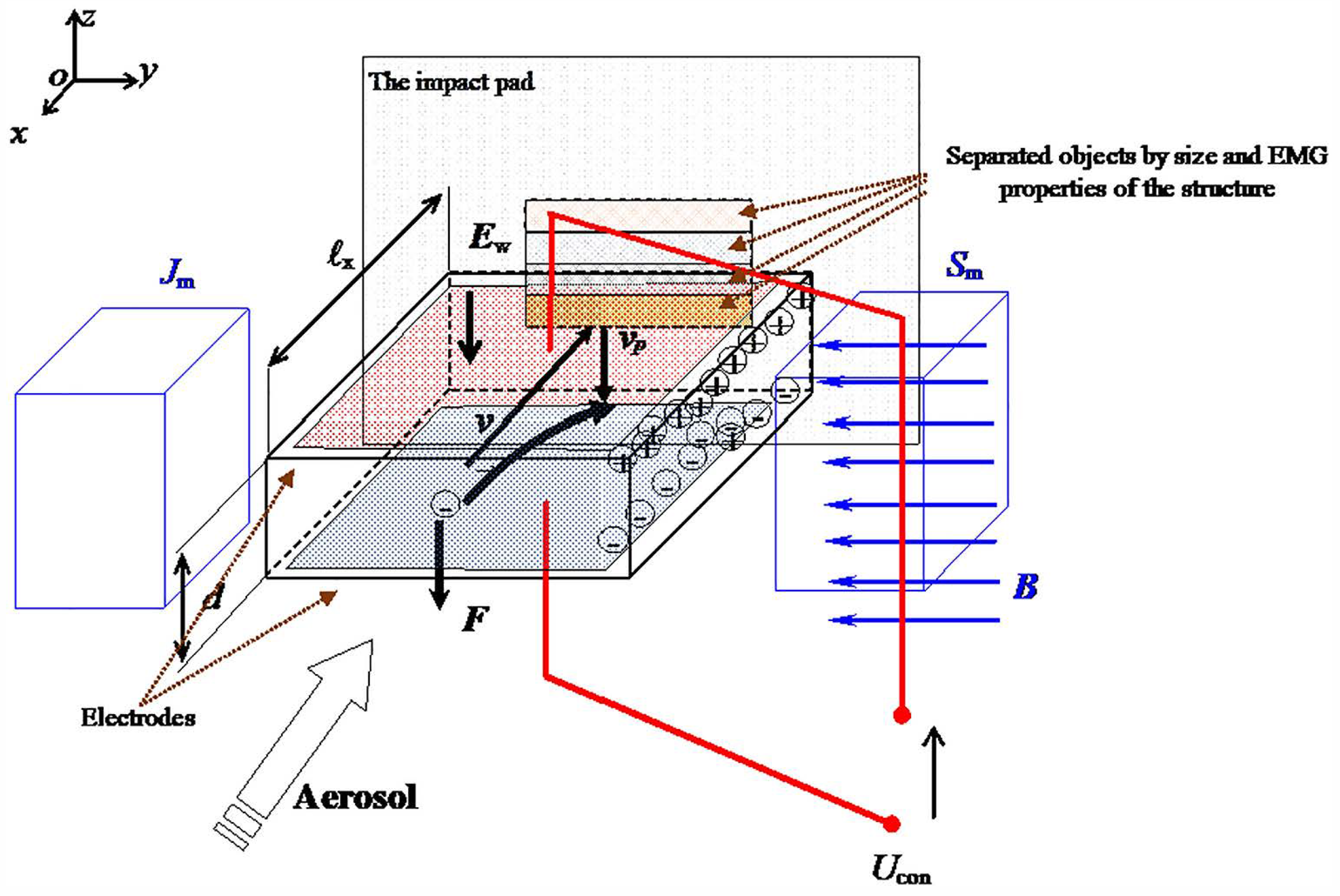

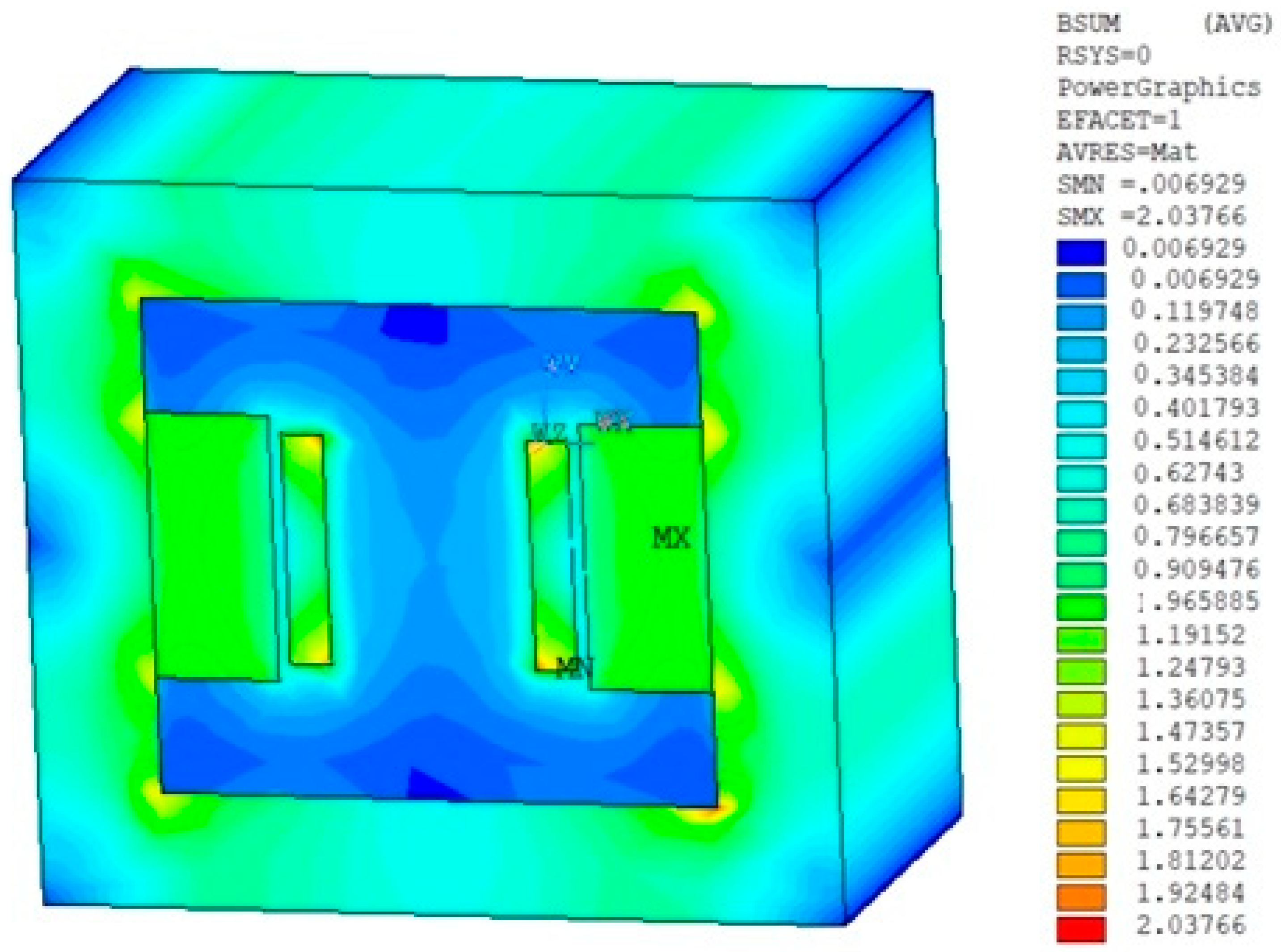
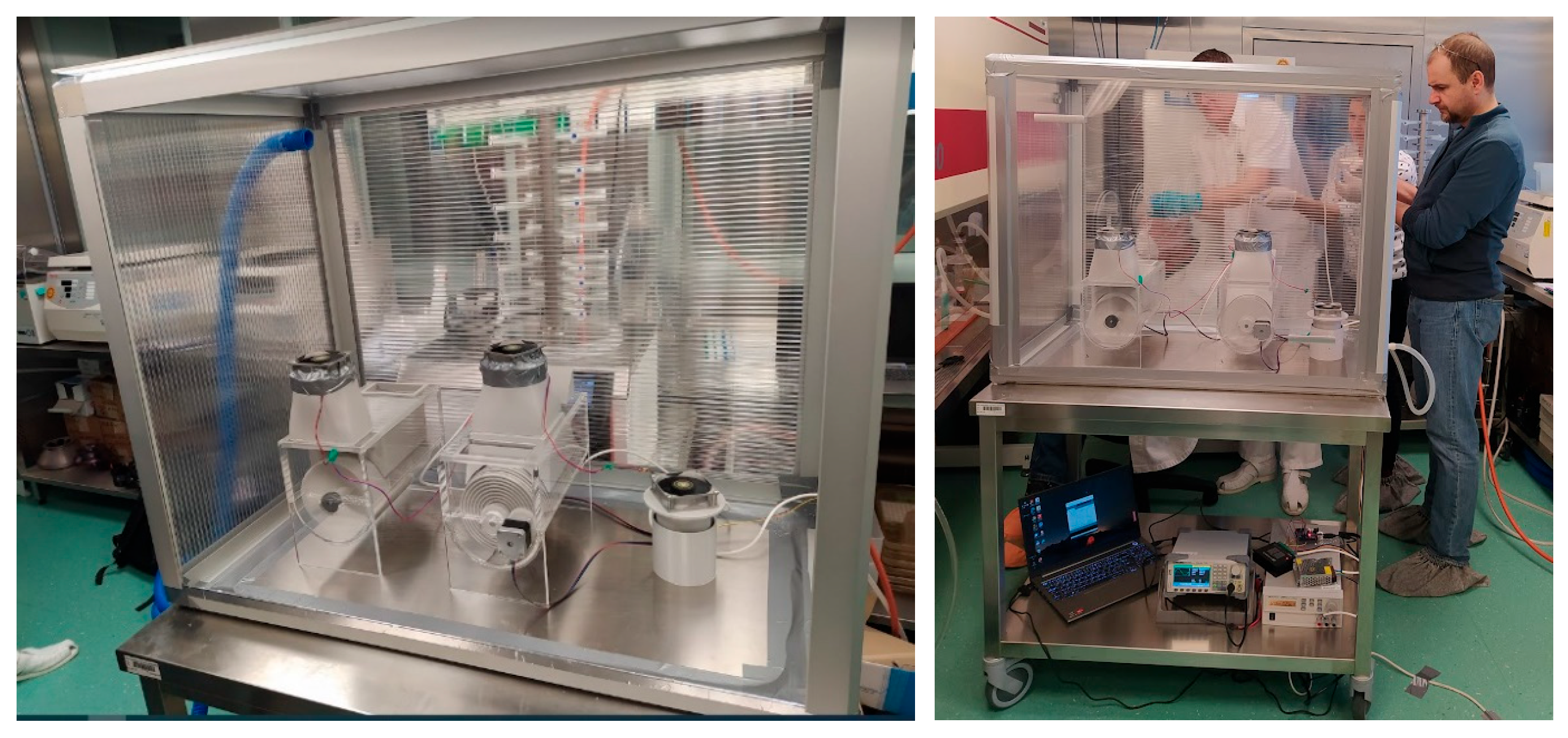



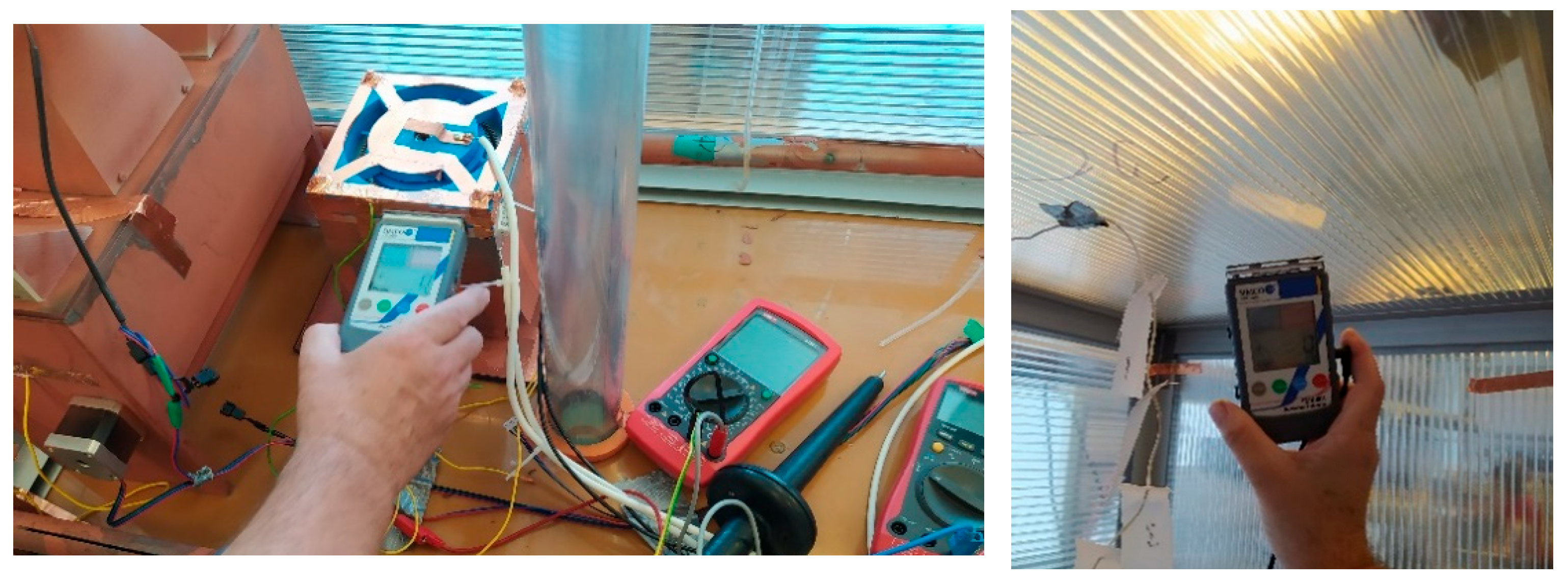


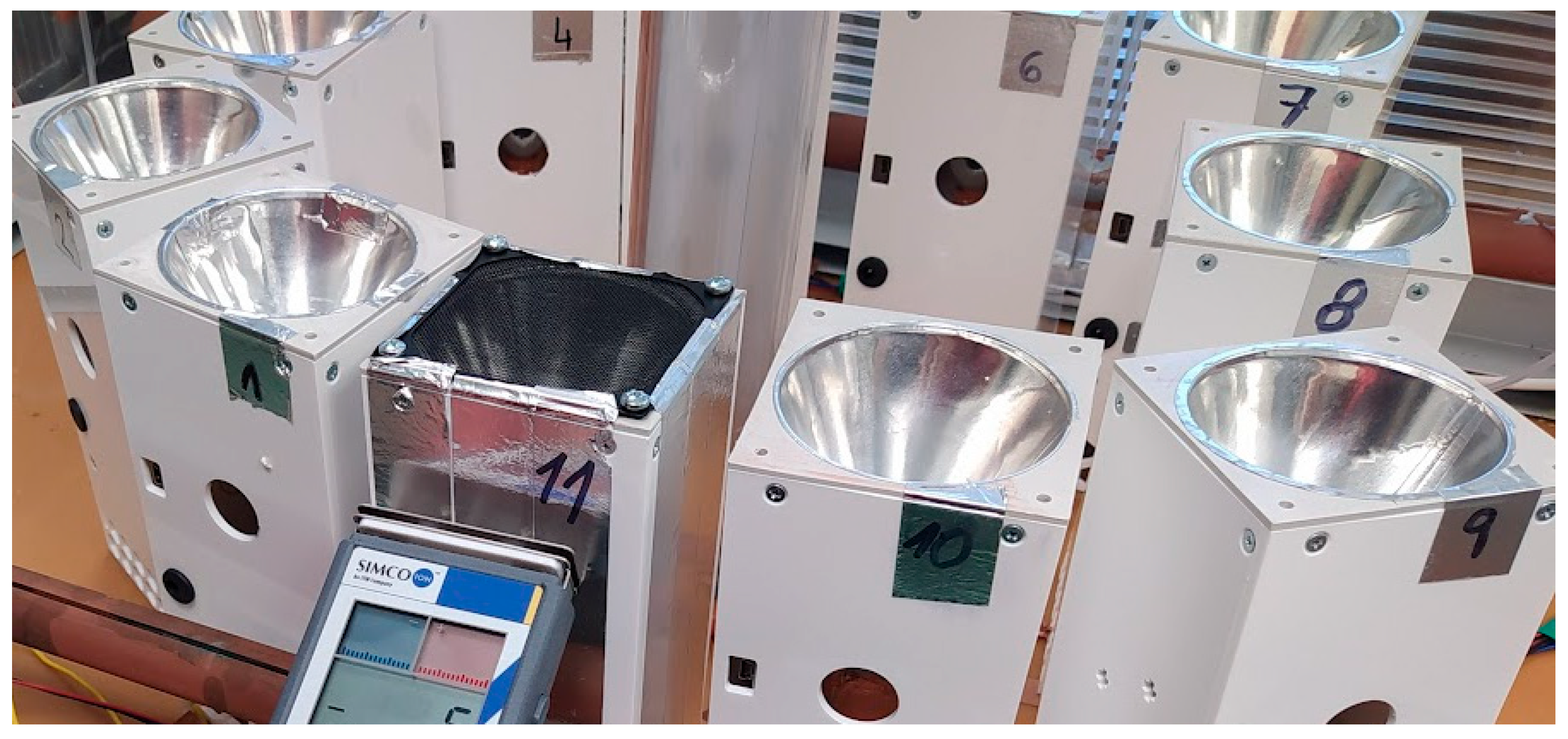
| Method | Active Surface Sact [m2] | Concentrate FIPV [Cells/mL] | Detection (Cycle Number When Exceeded 1·103RFU PCR Method) |
|---|---|---|---|
| LAP | 0.00785 | 1.8·106 | 36 |
| GPM | 0.141 | 1.8·106 | 34 |
| ADO | 0.530 | 1.8·106 | 34 |
| ACWL | 0.00942 | 1.8·106 | 36 |
| EHDS | 0.000400 | 1.8·106 | 36 |
| Comparative sampling | Sludge-contact | 1.8·106 | 26 |
| Method | Active Surface Sact [m2] | Concentrate FIPV [Cells/mL] | Detection (Cycle Number When Exceeded 1·103RFU PCR Method) |
|---|---|---|---|
| EHDS | 0.000314 | 1.8·106 | 36 ± 1.5 |
| Comparative sampling | Sludge-contact | 1.8·106 | 28 |
| Method | Active Surface Sact [m2] | Concentrate FIPV [Cells/mL] | Detection (Cycle Number When Exceeded 1·103RFU PCR Method) |
|---|---|---|---|
| r-EHDS | 0.000314 | 1.6·105 | 36 + 2 |
| Comparative sampling | Sludge-contact | 1.6·105 | 32 |
| Method | Active Surface Sact [m2] | Concentrate FIPV [Cells/mL] | Detection (Cycle Number When Exceeded 1.103RFU PCR Method) |
|---|---|---|---|
| r-EHDS | 0.000314 | 1.8·106 | 26 + 2 |
| Comparative sampling | Sludge-contact | 1.8·106 | 22 |
| Method | Active Surface Sact [m2] | Concentrate FIPV [Cells/mL] | Detection (Cycle Number When Exceeded 1·103RFU PCR Method) |
|---|---|---|---|
| r-EHDS | 0.000314 | 1.2·104 | 38 + 4 |
| Comparative sampling | Sludge-contact | 1.2·104 | 36 |
| r-EHDS | 0.000314 | 1.8·105 | 34 + 2 |
| Comparative sampling | Sludge-contact | 1.8·105 | 32 |
| r-EHDS | 0.000314 | 1.8·106 | 26 + 2 |
| Comparative sampling | Sludge-contact | 1.8·106 | 22 |
| Method | Active Surface Sact [m2] | Concentrate FIPV [Cells/mL] | Average Detection Value (Cycle Number When Exceeded 1·103RFU PCR Method), xAVG | Scatter Value (Cycle Number When Exceeded 1·103RFU PCR method), xscat |
|---|---|---|---|---|
| r-EHDS | 0.000314 | 1.2·104 | 38.60 * | 1.87 * |
| Sludge-contact | 1.2·104 | 35.81 | 1.53 | |
| r-EHDS | 0.000314 | 1.8·105 | 34.90 | 1.81 |
| Sludge-contact | 1.8·105 | 32.72 | 1.79 | |
| r-EHDS | 0.000314 | 1.8·106 | 26.09 | 1.70 |
| Sludge-contact | 1.8·106 | 22.18 | 1.32 |
Disclaimer/Publisher’s Note: The statements, opinions and data contained in all publications are solely those of the individual author(s) and contributor(s) and not of MDPI and/or the editor(s). MDPI and/or the editor(s) disclaim responsibility for any injury to people or property resulting from any ideas, methods, instructions or products referred to in the content. |
© 2025 by the authors. Licensee MDPI, Basel, Switzerland. This article is an open access article distributed under the terms and conditions of the Creative Commons Attribution (CC BY) license (https://creativecommons.org/licenses/by/4.0/).
Share and Cite
Pernica, R.; Szabó, Z.; Čáp, M.; Pavliš, O.; Kubíčková, P.; Zukal, J.; Fiala, P. A New Sensitive Sensor Test for Capturing and Evaluating Bacteria and Viruses in Airborne Aerosols. Sensors 2025, 25, 3866. https://doi.org/10.3390/s25133866
Pernica R, Szabó Z, Čáp M, Pavliš O, Kubíčková P, Zukal J, Fiala P. A New Sensitive Sensor Test for Capturing and Evaluating Bacteria and Viruses in Airborne Aerosols. Sensors. 2025; 25(13):3866. https://doi.org/10.3390/s25133866
Chicago/Turabian StylePernica, Roman, Zoltán Szabó, Martin Čáp, Oto Pavliš, Pavla Kubíčková, Jiri Zukal, and Pavel Fiala. 2025. "A New Sensitive Sensor Test for Capturing and Evaluating Bacteria and Viruses in Airborne Aerosols" Sensors 25, no. 13: 3866. https://doi.org/10.3390/s25133866
APA StylePernica, R., Szabó, Z., Čáp, M., Pavliš, O., Kubíčková, P., Zukal, J., & Fiala, P. (2025). A New Sensitive Sensor Test for Capturing and Evaluating Bacteria and Viruses in Airborne Aerosols. Sensors, 25(13), 3866. https://doi.org/10.3390/s25133866








